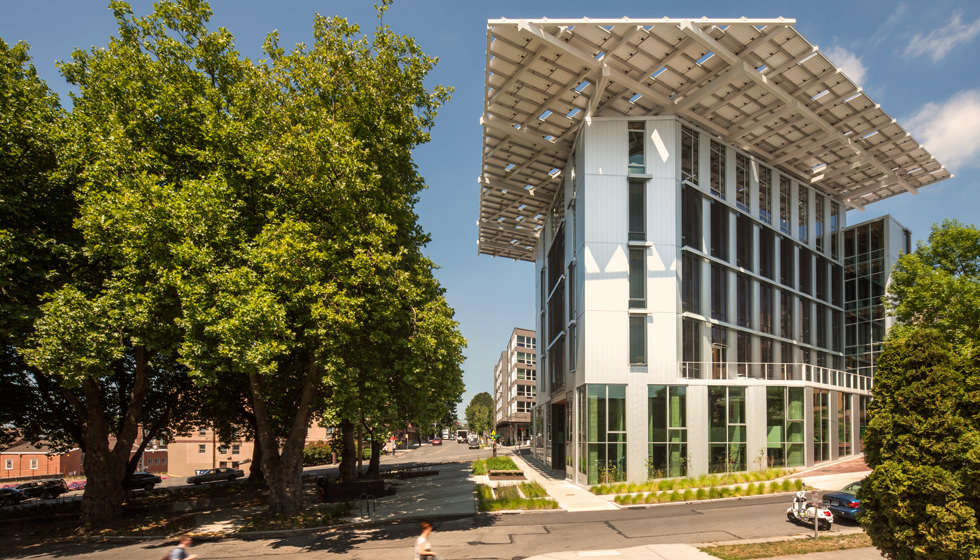How a Green Building in Seattle is Shaping the Future

Green buildings are the future. Whether it’s capturing energy from the sun, recycling rainwater, or creating urban gardens, these buildings are helping create more sustainable cities around the world.
One such example is the Seattle Bullitt Center, a building so sustainable that it’s considered to be “living.”
But why is that?
In this article, we’ll explore what the Bullitt Center is, the defining features that make it a “living” building, and what the rest of the world can learn in order to create a better future for all.
What is the Bullitt Center?
Opened on Earth Day in 2013, the Bullitt Center is considered to be the most sustainable commercial building in the world. Located in the neighborhood of Capitol Hill in Seattle, Washington, it was built by the Bullitt Foundation, a non-profit that focuses on urban ecology.
Considered to be at the cutting edge of green construction, the Bullitt Center is designed to show what’s possible and increase the pace of change in the movement toward resilient cities.
With sustainable and efficient features, the Bullitt Center has a lifespan of 250 years, far longer than most buildings today.
How Can a Building Be “Living?”
The building’s design features are meant to replicate that of a natural ecosystem. Due to these features, the Bullitt Center was certified as a “Living Building” in 2015.
So what exactly does it mean to be a Living Building?
For starters, the building is required to produce as much energy as it uses in an entire year. Secondly, the building has to capture and treat rainwater for all its needs for at least 12 consecutive months. Finally, it must meet rigorous standards for materials and quality of its indoor environment.
Impressively, the Bullitt Center passes the test and is one of just 15 Living Buildings in the world.
Let’s take a closer look at some of the other features that make the Bullitt Center one of the most sustainable buildings on the planet.
Creating a Sustainable Framework
With a roof composed of 575 solar panels, the Bullitt Center generates nearly all its electricity from the sun. In fact, in 2016 the building produced nearly 30 percent more energy than it needed. As a result, it has one of the largest net positive energy sources out of any building in the world.
One of the Bullitt Center’s most unique features is its onsite composting toilet system, the world’s only 6-story system of its kind. In addition, the building is constructed from products free of over 360 toxic chemicals.
The building also includes an on-site rainwater system. All rainwater that falls on the site is collected, treated to potable drinking water, and supplied for all the building’s water needs.
With so many planet-friendly features, it’s no wonder the Bullitt Center is leading the way in creating greener buildings and a more sustainable future.
How the Bullitt Center is Shaping the Future
The Bullitt Center is part of the Seattle 2030 District, an EcoDistrict that applies sustainability at a neighborhood scale. The 2030 District is an organization meant to bridge the gap between private and public sectors to reduce environmental impacts of buildings in the Seattle area.
This one-of-a-kind EcoDistrict is one of only a few in the country. But it’s something we could all learn from.
With more buildings being constructed year after year, sustainability is quickly becoming a focal point of their design. From LEED certified buildings to “Living Buildings” like the Bullitt Center, a focus on the planet is shaping the future of architecture and how we think about green cities.
The path toward sustainable cities won’t be an easy one. But if we take some of the lessons learned from the Bullitt Center, we’ll be well on our way to creating a brighter future for all.


Leave a Reply